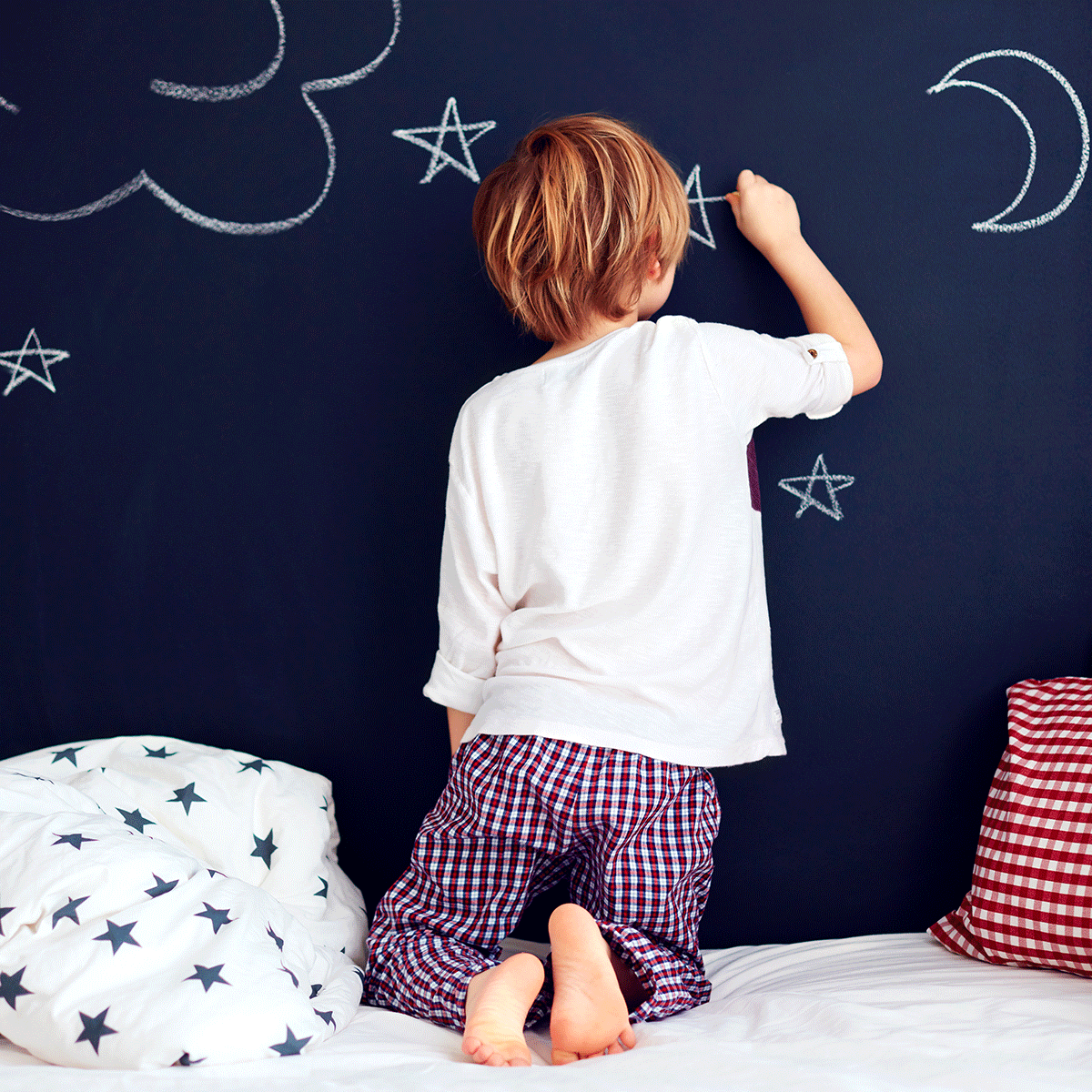Chalkboard paint (which is not the same as chalk paint) is fun, versatile and easy to use.
5 Things to Consider Before Painting a Chalkboard Wall

Chalkboard paint allows you to transform a wall into a family message center, create a small accent wall or decorate a child’s bedroom or playroom to encourage creativity. However, there are a few things to consider before you paint a chalkboard wall.
What Is Chalkboard Paint?
Be sure not to confuse chalkboard paint with chalk paint. Chalkboard paint is just what it sounds like—paint that allows you to turn the item or wall you’re painting into one you can write on with chalk. It creates a hard, scratch-resistant surface and can be applied to wood, metal, drywall, glass, concrete and more. According to Rust-Oleum, a maker of chalkboard paint, the paint works best when used indoors and can be cleaned with soap and water. Allow the paint to dry for three days and once cured, prepare the surface for chalk by rubbing the side of a piece of chalk over the entire surface, and then erase it.
Chalk paint is different. Chalk paint was developed more than 25 years ago by Annie Sloan and is mainly used for painting furniture. The paint can be used without all the extra prep work usually done before painting furniture, such as sanding and priming.
Things to Consider Before Painting a Chalkboard Wall
Dust: If you don’t like dust, a chalkboard wall may not be right for you. Chalk is messy and the dust from the chalk will find its way to your floor and to any furniture and crevices nearby. Colored chalk dust can also discolor any flooring or painted walls nearby.
Don’t Make It a Focal Point: Chalkboard paint is best used in moderation. Use it to paint a small wall or just a portion of a wall. Place the chalkboard wall in a less obvious part of your house and you won’t have to worry about the trend becoming an eyesore. A big chalkboard wall in a main part of your home—such as the living room—may end up making the room look like graffiti central.
The Condition of the Wall: The wall you choose to paint should have a smooth texture or the chalkboard aspect won’t work well. In addition, chalkboard paint will catch every little bump and crevice. Make sure you have a smooth surface before you get started.
You’ll Need Two Coats: When you’re ready to paint, you’ll likely need at least two coats, if not more. This will all depend on the surface and condition of the wall you’re painting and the brand of paint you use.
There’s More than Just Black: Chalkboard paint come in colors other than black. Benjamin Moore offers chalkboard paints in any one of their 3,500-plus colors. Magenta? Sure! Or try gray, green or red.
If you get tired of a chalkboard wall, you can just paint over it. Wash the area to remove all residue, then sand, prime and paint over it with your favorite new color.
Watch and learn how to make a chalkboard organizer:




















